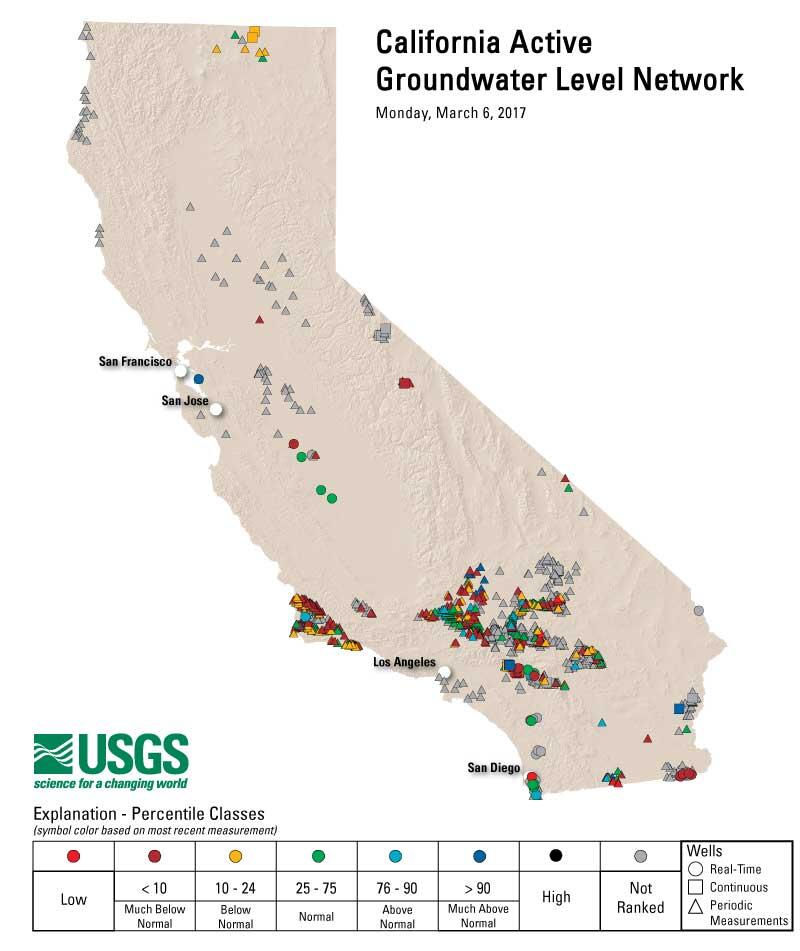National Groundwater Awareness Week: Sustainable Groundwater Management in California
The National Groundwater Association has declared this week, March 5-11, as National Groundwater Awareness Week.
Not sure what "groundwater" is? Read the U.S. Geological Survey Open File Report "What is Ground Water?" to learn the fundamentals.
Part of the U.S. Geological Survey's mission is to provide the science resource managers need to effectively manage groundwater, so naturally we are excited to spread awareness! Our scientists at the California Water Science Center (CAWSC) are hard at work, year-round, examining the state's groundwater resources. All month long, we will be focusing on sharing how our science addresses groundwater issues throughout California.
Groundwater is found in aquifers below the surface of the earth, and has many important uses in the household, industry, and agriculture. More than 50 percent of people in the United States – including almost everyone who lives in rural areas – use groundwater for drinking and other household uses. Approximately 75 percent of cities and factories across America use groundwater for industrial purposes. Nationwide, the largest use of groundwater is to irrigate crops. In California, groundwater is a precious resource, providing approximately one-third of the state's water supply. Home to more than 38 million residents, California uses 13 billion gallons of groundwater each day for domestic, business, and agricultural purposes. The state also serves as a large agricultural industry for the nation, providing more than one-third of the country's vegetables, and two-thirds of the country's fruits and nuts. More than 400 commodities come out of California, making California's agricultural industry a \$47 billion industry (2015). All of this relies on groundwater.
In 2014, the State of California adopted the Sustainable Groundwater Management Act (SGMA), a legislation created to help water resource managers, policy makers, and local government entities manage groundwater resource. The aim of SGMA is to ensure groundwater is being managed and used, effectively and sustainably, without causing "undesirable results," including groundwater-level declines, groundwater-storage reductions, seawater intrusion, water-quality degradation, land subsidence, and interconnected surface-water depletions. Scientists from CAWSC are dedicated to understanding the current status and possible future of California's groundwater. Our scientists are conducting studies throughout the state to examine the quantity and quality of groundwater, and address issues related to groundwater like land subsidence and groundwater storage possibilities.
Because California's growing population and industries depend on groundwater for a major source of water supply, USGS data will provide water managers with information they need to develop and implement sustainable groundwater management plans that are essential to a reliable and resilient water supply system. USGS couples decades of groundwater data with new studies to understand trends, and investigate and predict long-term effects of different groundwater management strategies. USGS studies issues that have economic impacts, including the current and future availability of groundwater for drinking and agricultural industry. California relies on USGS's innovative science and technologies to support a sustainable future.
To kick off National Groundwater Awareness Week, we invite you to explore the California Water Science Center webpages on Sustainable Groundwater Management. These pages outline the efforts USGS is making to understand the issues that affect groundwater in California, and highlights the data collection, modeling tools, and scientific analysis USGS implements to help water resource managers plan for a sustainable future.


